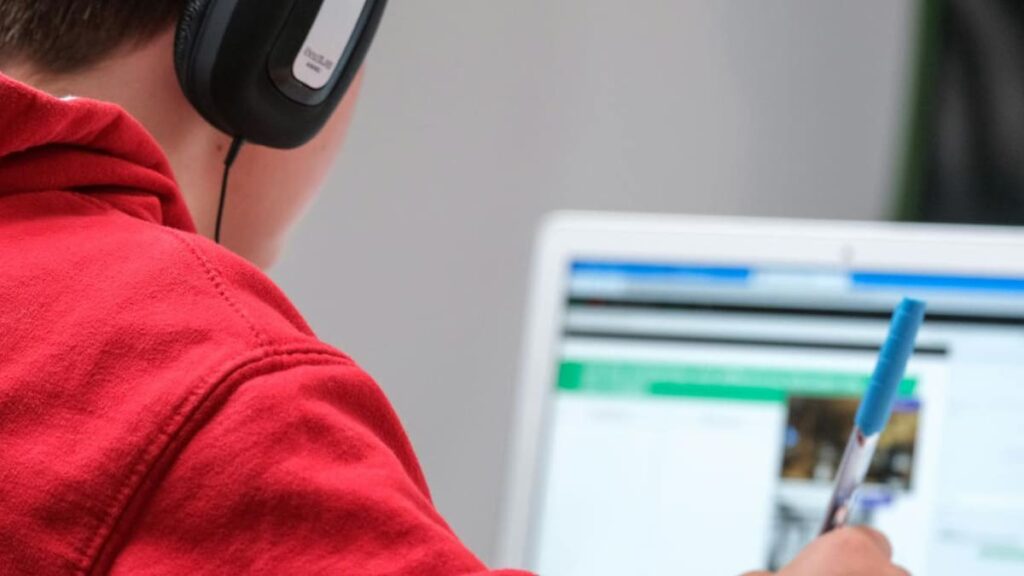In a surprising move, the Swedish government has placed the blame for declining student performance squarely on the rise of screen usage in schools. The country is shifting its focus back to traditional textbooks, a move that reflects growing concerns over the role of digital devices in education.
The Growing Presence of Screens in Schools
It’s no secret that technology has become an integral part of our daily lives, and schools are no exception. Over the past few years, many educational institutions have embraced digital tools—tablets, laptops, and interactive whiteboards—as a way to enhance learning. In France, for example, digital tools like Pronote have replaced traditional communication methods, allowing students and parents to access grades, timetables, and attendance records with just a few clicks.
These technological advancements offer a variety of benefits: they enable students to watch documentaries, interact with quizzes, and access a wealth of information online. The convenience and interactivity are undeniable, making learning more engaging for students. However, as with any new tool, there are drawbacks, and some of these are starting to raise alarms in educational circles.
The Negative Impact of Screens on Students
While the advantages of technology in the classroom are often celebrated, the drawbacks are starting to outweigh the positives in certain cases. Distraction is a major concern. For students who already struggle with attention issues, the temptation of social media, games, or videos is often too great to resist.
Moreover, studies have shown that reading on backlit screens is more fatiguing than reading on paper, which can hinder comprehension and memory retention, especially for younger students. In fact, research suggests that the cognitive load required to process information from a screen can make it harder to understand and retain material.
In Sweden, these concerns have led to a growing criticism of the extensive use of screens in education. What once seemed like a modern, innovative approach is now being questioned as a potential cause of the country’s declining educational performance.

Sweden’s Shift Away from Digital Learning
In Sweden, textbooks have been gradually replaced by screens over the past 15 years, with schools providing laptops or tablets for students to complete assignments, research, and study. While this approach was initially seen as a way to make learning more accessible and up-to-date, many parents and educators have voiced concerns about its effectiveness.
One of the biggest challenges reported by parents is the difficulty in ensuring that children are actually doing their schoolwork rather than getting distracted by movies, games, or social media. This concern is not unique to Sweden. Across Europe, children are becoming more connected to digital devices from an early age. For instance, in Sweden, a study from 2018 revealed that one in five children between the ages of 5 and 8 owned their own smartphone. In France, over half of primary school students now own a mobile phone, and 12% of children between the ages of 9 and 10 also have their own device.
Despite being among the top performers in terms of reading comprehension in the European Union, Swedish students have been showing a noticeable decline in academic performance over recent years. Lotta Edholm, Sweden’s Minister of Education, has expressed concerns about the lack of critical thinking among students and an over-reliance on digital tools, which may be contributing to a decrease in learning quality.
Returning to the Classics: The Push for Textbooks
To address these issues, the Swedish government has decided to take action. With plans to reverse the trend toward digital-only learning, the government has allocated significant funds—€60 million last year, and an additional €44 million this year and in 2025—towards reintroducing textbooks into the classroom. The goal is to ensure that each student has access to a physical book for every subject.
Edholm argues that the return to traditional textbooks will help students better retain information and develop the critical thinking skills that are becoming increasingly difficult to foster with the overuse of digital devices. Her call for a return to printed materials is not just about nostalgia for the old ways but is a response to concerns that screen-based education may not be as effective in nurturing long-term learning and cognitive development.
The Global Debate on Digital Learning
Sweden’s shift back to textbooks is just one part of a larger global conversation about the role of technology in education. While screens are an undeniable part of modern life, the balance between digital tools and traditional learning methods is still being tested. Some experts argue that a hybrid approach, where technology supports rather than dominates the learning process, is the key to success.
In the end, the Swedish government’s decision to focus on printed books instead of screens is part of a broader effort to ensure that education remains grounded in solid, effective learning practices. Whether or not other countries will follow Sweden’s lead remains to be seen, but it’s clear that the debate over the use of technology in schools is far from over.
What do you think about the role of screens in education? Should technology be embraced or limited in the classroom? Share your thoughts in the comments—I’d love to hear your opinion!






